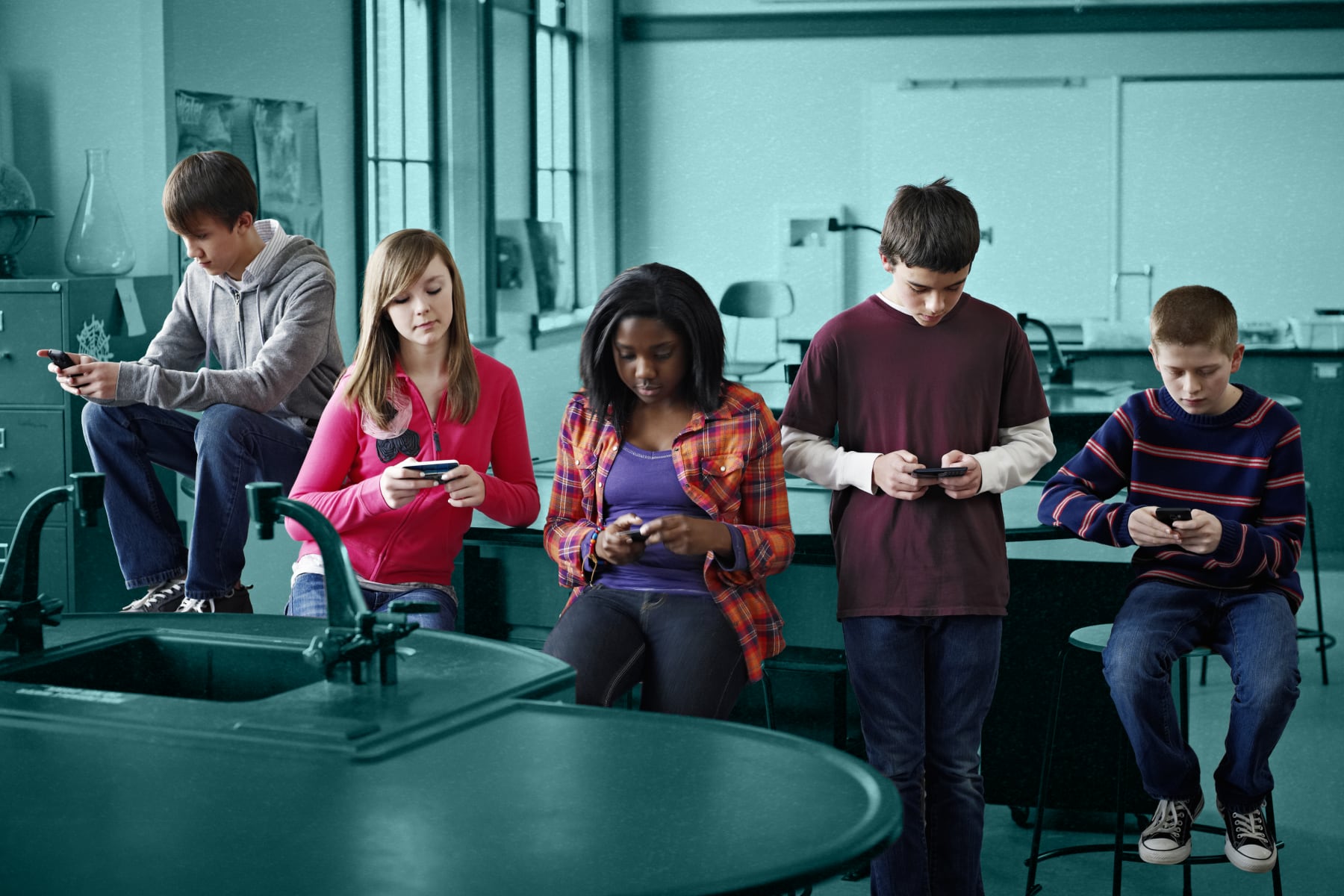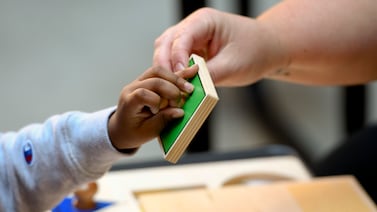I teach high school and my building doesn’t have a policy about phones. They say it’s “up to each teacher.” Any advice for what my classroom policy should be? The only schoolwide rule is that teachers are not allowed to take or collect student phones. — Can’t Compete with TikTok
Dear Can’t Compete with TikTok,
We have the exact dilemma in my high school.
Even without a building or district-level policy, our administration team considers student phone usage part of our teacher evaluations. If an administrator pops in for an observation, they count the number of students and list how many are distracted by their cell phones. I know because one of these surprise observations happened recently to me.
Cellular phone usage in schools has been a national debate for over a decade.
Educators are in a daily power struggle with students who are distracted by their phones. Taking back our classrooms from these devices has to be a community effort.
A district that expects teachers to discipline students about excessive cell phone use exacerbates the problem when they put the responsibility on the individual teacher rather than taking a district-wide stand.
Earlier this fall, I learned from experience how cellular devices have changed the way schools, teachers, and students operate.
While teaching my literature class, I could not hold my students’ attention. No matter how I tried to redirect my class, they kept turning to their classmates, talking, and pointing at their phones. I finally asked what was happening.
They were watching students livestream on social media as they escaped a school shooter. The scene was active and happening 25 minutes from our location in St. Louis.
The impacted children filmed their raw emotions for the world to experience. My students, 15 miles north of the tragedy, were fully engaged in the terror of the situation.
Needless to say, the school day was not business as usual.
English class was the least of their concerns. As their teacher leader, I felt it was my duty to address and alleviate their fears. I know that as a parent, I would not want my child to witness these scenes without my input.
I felt terrible about these students watching their peers in real time face a terrible tragedy.
Can’t Compete with TikTok, phones at school mean our students are more plugged in than ever. Sometimes they derail an entire day because of a critical event, and sometimes they can save lives like for the students who were able to alert each other and their families about the shooting in their school.
Regardless of how they impact our work as educators, they are here to stay. We have to ensure our students learn to manage their cell phone usage especially while in our classrooms.
I have co-workers who have invested in cellular phone locking cabinets. While teachers rave about the success of these boxes, your district has asked you to not collect phones.
I once had a phone stolen that I had taken from a student. I had an idea who took the phone, but I couldn’t prove it. The district had to replace her phone. Now, as a rule, I don’t touch student phones unless I am given explicit permission.
You have been with your students for about four months now. Even if you did not make your cell phone policy clear at the beginning of the year, it’s not too late to command their attention to keep them focused.
Here’s how I manage cell phone use in my classroom
- At the beginning of each class, I welcome students with an attention getter. Most of the class will turn their phones over and look up for instructions. I make eye contact with all students. If I find I do not have everyone’s attention, I respectfully ask the entire class to put their phones away.
- I praise three to four students who have taken care of their phones. For example, I will say, “Brandon, has put his phone away, he’s ready for instructions. Tracy, I see your eyes this way and phone turned over.” I choose students who are sitting close to distracted classmates. In my experience, that’s enough motivation for all students to pay attention.
- I give detailed instructions to the students and let them know what their voice levels should be and what to do when they finish the task I have given them. Then, students will not have the, “I’m finished” excuse they believe allows them to scroll.
- Throughout the task I use timers. I move around the room and positively support students with sticky notes or comments to let them know I recognize their efforts and I encourage them to stay focused.
Can’t Compete with TikTok, I oversimplified this process for the sake of explanation. It is a lot of work to practice this level of support for students in every class, especially when I have 33 students.
Be patient if the results do not happen as fast as you want. Remember that every day you are impacting lives. Consistency and consequences will lead to the outcomes you want. Slow and steady wins the race. When all else fails, recruit support with administration and families.
Everything you do is teaching students how to have a growth mindset. Instead of changing their behavior, leverage it.
My favorite classroom slogan is, “I teach scholars not scrollers.” Show them how important it is to make the right decisions and let their admiration for you and their future success be the primary driver in temporarily letting TikTok go.
Dr. Kem Smith is Chalkbeat’s first advice columnist. She is a full-time 12th-grade English teacher in St. Louis, Missouri. Submit your question to Dr. Kem via this submission form, and subscribe to How I Teach to receive her column in your inbox.
If you have a rebuttal or additional advice you’d like to share with Can’t Compete with TikTok, please email afterthebell@chalkbeat.org.







